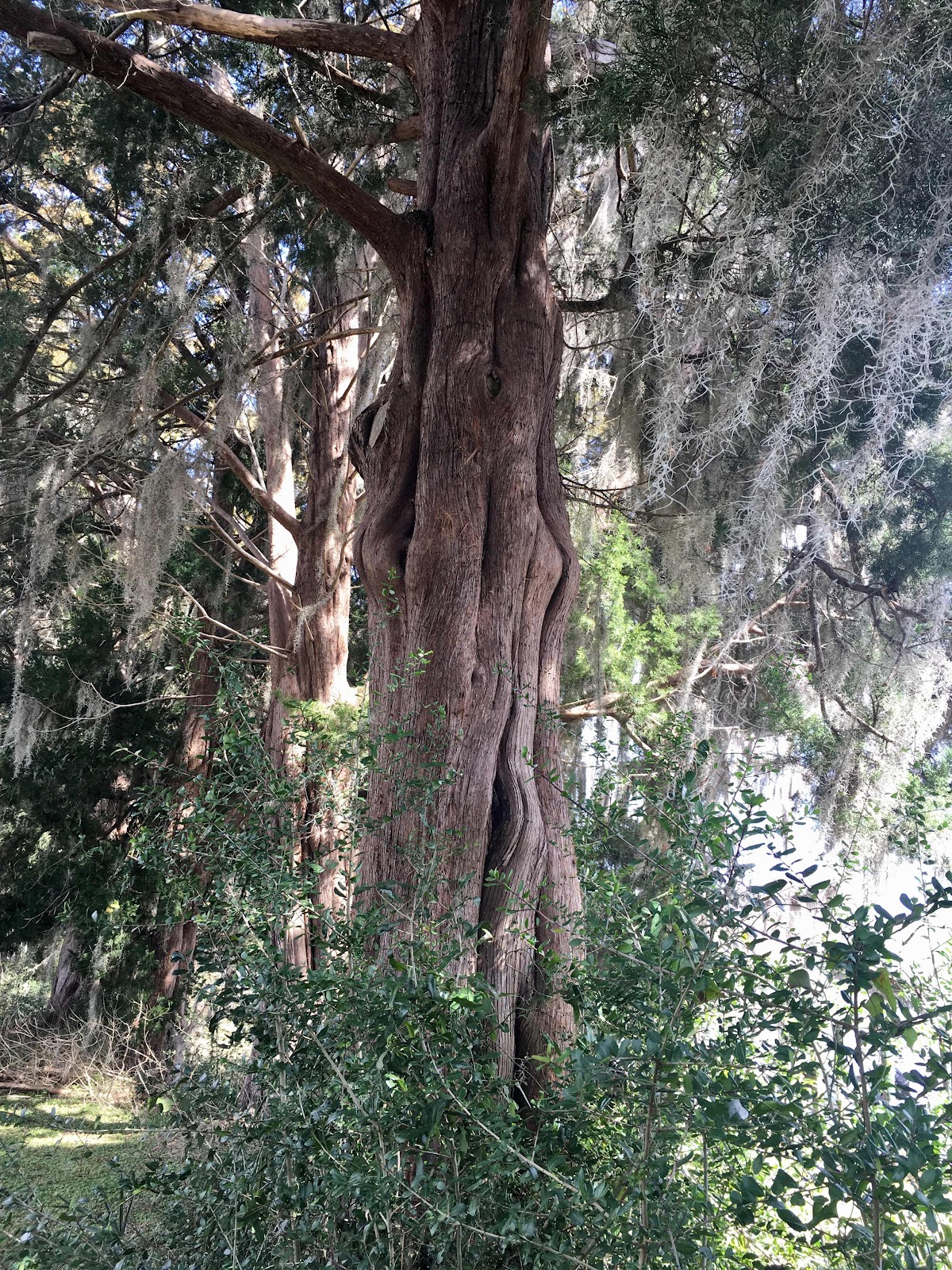Some trails at Santee Coastal Preserve close to humans for three months of the winter. Last weekend it was so wonderful to return to one of our favorites, the Cape Trail.
This trail follows a system of dikes built by slave labor in the 1700s to create the rice fields that brought great wealth to the white planters of South Carolina.
While a walker is high and dry, on either side of the trail, water fills marshes through a system of rice gates, technology invented in Africa centuries ago and carried by the enslaved workers to America.
Beyond the rice fields that line the coast, on the horizon lie the coastal barrier islands and beyond them, the Atlantic Ocean.


We enter this watery world, passing along a path lined with gnarled old cedars and live oaks. The trees lean in unison to the west, permanently bowed by the many hurricanes they have survived, their trunks reminiscent of old hands that have completed many years of work.
We walk on and soon the trees give way, ushering us to a vista of miles of marsh.
Spanish cane, also brought by the enslaved workers from Africa to keep the dikes from eroding away, still autumn-brown and taller than our heads, shelters red-winged blackbirds. The birds greet us, calling out their spring song: Conk-a-Reeeee, conk-a-reeeeeee.
Stopping to admire the open view, we quickly locate fishing egrets and herons, a flock of white ibises in flight along the far tree line, their bright orange curved bills making them identifiable from a great distance. Above us, vultures glide the thermals, tilting their wings this way and that, skillfully grabbing free rides on updrafts of air.
Yellow-rumped and pine warblers chase each other in and out of the foliage of the water oaks at the edge. “Now-you-see-‘em, now-you-don’t” as they nab newly-woken insects on the fly.
From the bright sun of the open marsh we move into the dampness of a cypress swamp — the Forest Primevil, a dark place that seems to emit its own light.
The trees, covered with lichens, glow yellow and red and white, appear as if lit from within.
The clear fresh water of the swamp displays a carpet of flat-leafed green circles and moss,
a whole world just below its surface.
Santee Coastal Preserve has “preserved” our sanity during this year of lockdowns, sheltering in, and avoiding people during the Covid pandemic. We are so grateful to live where we could get out of the house often and still be safe.
We will finally get our first shot of the vaccine tomorrow! Hopefully the world will open up to us soon and we will be able to venture farther when the second dose is administered and takes effect.
I find myself musing about what I most want to be able to do when the world is safer again and I surprised myself by realizing that what I want most is to go INSIDE a grocery store and pick out my OWN produce! No more brown lettuce! No more shriveled oranges the size of pingpong balls! No more moldy onions! Of course the biggest thing really will be to see family again, but it’s surprising how important (and missed) the little things have been as well.